Wayne started diving in 1973 and became so enthused with it, he joined a dive company on Australia’s Great Barrier Reef. He was their first fulltime employee, and over the 23 years he was there, he helped it grow to over 100 fulltime staff running four liveaboard dive boats between 20 and 35 meters in length. In this article, Wayne helps answer the question of which type of dive gear might best suit your cruising lifestyle.
Since 2014 my wife and I have lived and cruised aboard Hope, our 56ft Hanse yacht. We have spent the last 3 years saling and diving in the Caribbean.
We fitted a dive compressor on our yacht when she was being built. We also have a form of hookah (surface supplied breathing apparatus – SSBA) which I mainly use when working on or cleaning the yacht’s hull. The hookah is made up with a scuba tank with a first stage attached and a 20 meter floating hose leading to the second stage on demand valve.
So what is best on a cruising yacht- scuba, hookah or snorkelling? Let’s start with an overview of each before we consider their pros and cons:
SCUBA
Short for Self Contained Underwater Breathing Aparatus, a SCUBA diver carries a bottle of compressed air on their back, and other specialist equipment giving them complete freedom to explore underwater.
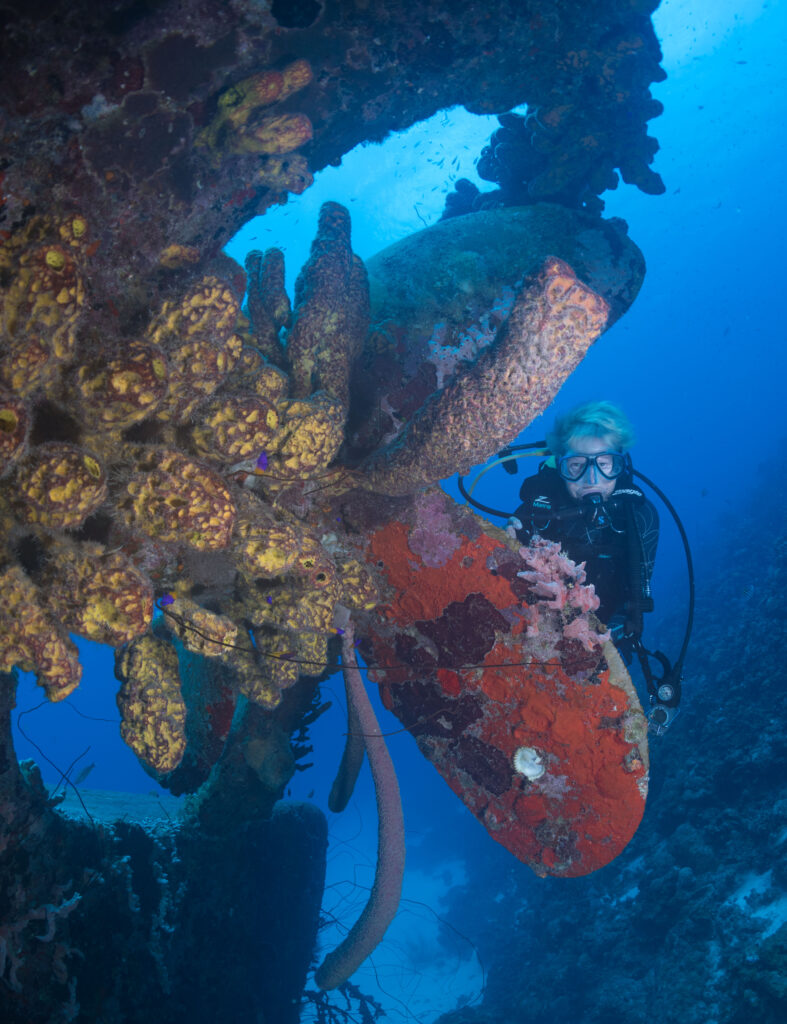
Equipment needed
Snorkelling equipment. wetsuit, regulator with gauges, octopus, buoyancy vest (BCD), dive computer, tank and weights.
Costs vary a lot. Basic equipment starts at about $2,500 USD and heads upwards to about $4,000 or more for top end equipment.
Do I need a dive compressor? They are not a necessity because in many areas your scuba tanks can be refilled relatively cheaply at a dive shop. A high pressure breathing air compressor like the Coltri 100 or Bauer Junior 2 will refill a scuba tank in about 20 minutes, and cost between $3,000 and $4,500 USD. The final filter element needs changing about every 20 tank fills and cost about $55. Compressors need a well ventilated area when running. Generally, a generator of about 6kw or larger is required to run these compressors but I have seen two installations on cruising boats which use a lithium house battery bank and a larger capacity inverter.
Training
A scuba diving course is essential for your safety.
Hookah
A hookah is a general term for a low pressure compressor unit on the surface which supplies compressed air to one or two divers. Sometimes referred to as Surface Supplied Breathing Apparatus, or SSBA.
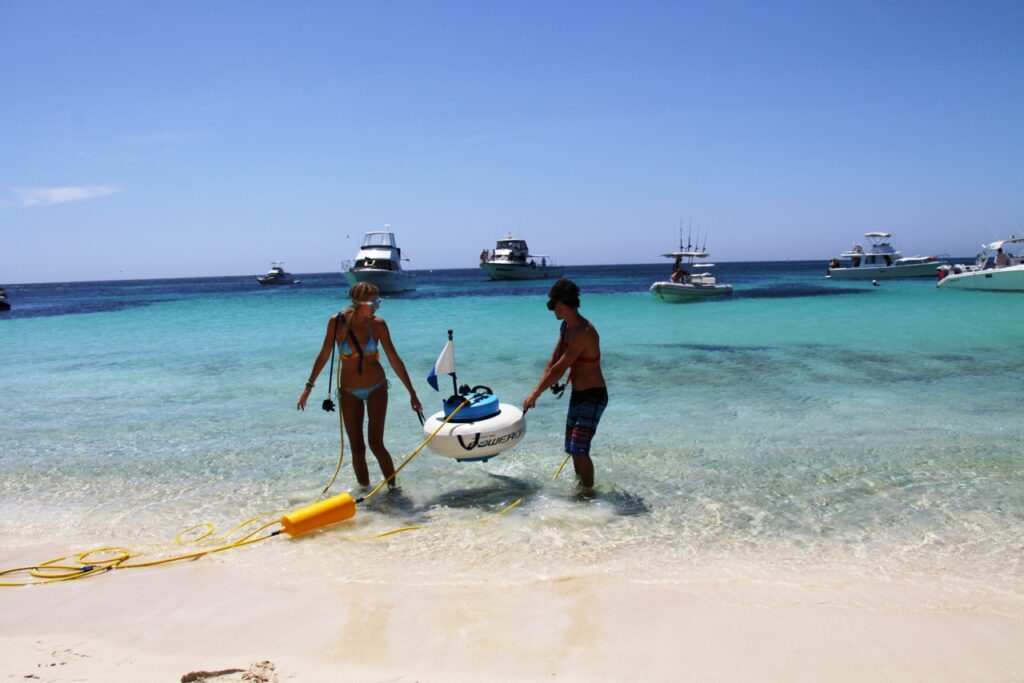
Equipment needed
Popular examples of a hookah are the various Powerdive units made in Australia or Brownies Third Lung made in USA. The cost of a hookah to allow two divers to reach 12 meters start at about $3,000, but there are cheaper units available.
A hookah can be powered by a petrol (gasoline) motor but more normally they are battery powered. Some hookahs are designed to stay on your yacht or dinghy whilst other have their own float system which the divers tow with them. Of course you still need snorkelling equipment, wetsuits and weights.
The SSBA we have onboard uses a scuba tank to provide the compressed air to the diver(s) via a long floating hose.

Training
Using a hookah requires similar safety procedures as SCUBA so a scuba training course is essential.
Snorkelling
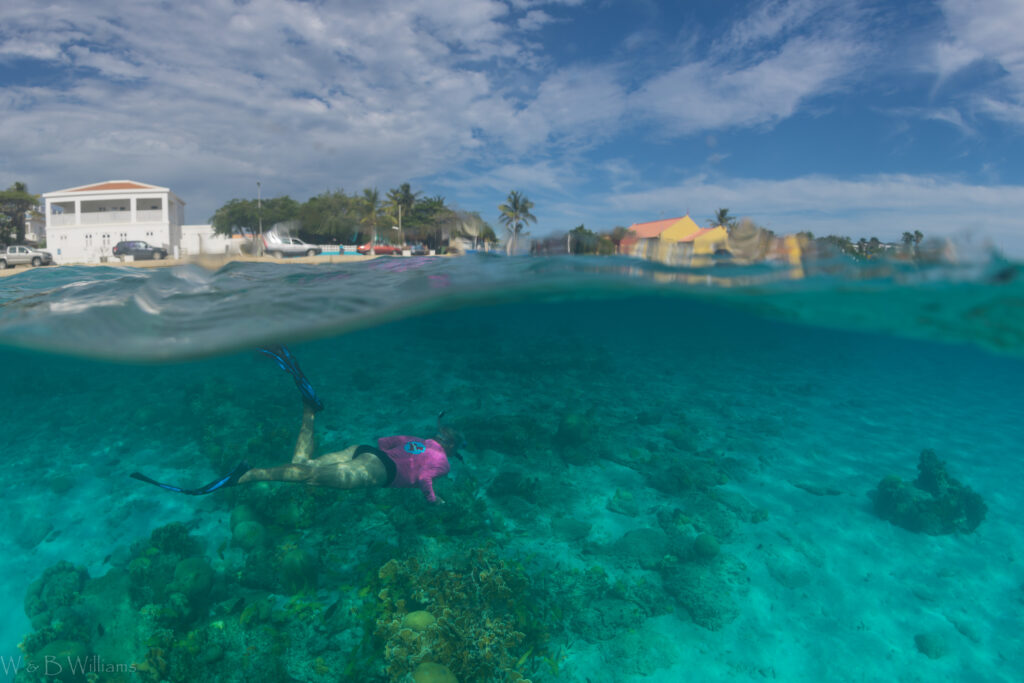
Equipment
Mask and snorkel, dive fins, and possibly a wetsuit or just a rash vest. Optionally a weight belt. A surface “Diver in the water” marker float is an excellent idea when snorkelling in a busy boating area.
Training
Although specific snorkelling training is not essential, some people who are keen to extend their limits take a freediving course offered at specialist dive shops.
What are the pros and cons of each option?
Scuba
Pros
- A great way to see marine life in deeper water. Exploring wrecks, caverns etc. is more practicable with scuba.
- You and your buddy are not restricted to shallow depths with dives to 30-40 meters possible based on your training level. Depending on the dive area, depths are more commonly around 18 meters or shallower.
- Offers lots of time for photography and video.
- Makes cleaning your yacht’s hull easier.
- Makes freeing a stuck anchor easier.
Cons
- Equipment intensive – storing scuba gear can be difficult on cruising boats.
- Getting your scuba tanks refilled can be difficult or impossible in the more remote areas. Having your own onboard dive compressor overcomes this but then introduces additional storage and maintenance issues.
- Scuba tanks need to be inspected and /or hydrostatically tested on a regular basis.
- Fresh water rinsing of scuba equipment takes a fair amount of water.
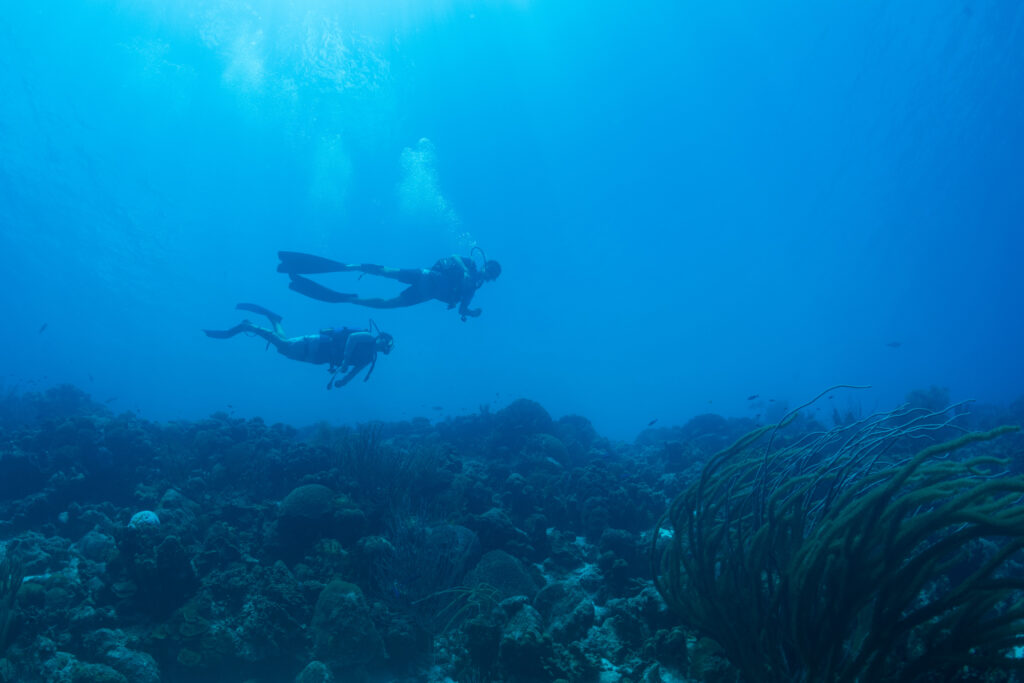
Hookah
Pros
- Long dive times at shallow depths are possible.
- Less equipment to wear.
- The hookah units normally use an oil free compressor which needs little maintenance apart from an annual service.
- Makes cleaning your yacht’s hull easier.
- Depending on the depth, hookah can be used to help free a stuck anchor.
- Less equipment means less fresh water used to wash down.
Cons
- Depths and distance from the hookah are restricted by the hose length and supply volume.
- The battery running the hookah compressor will need recharging, probably between each dive.
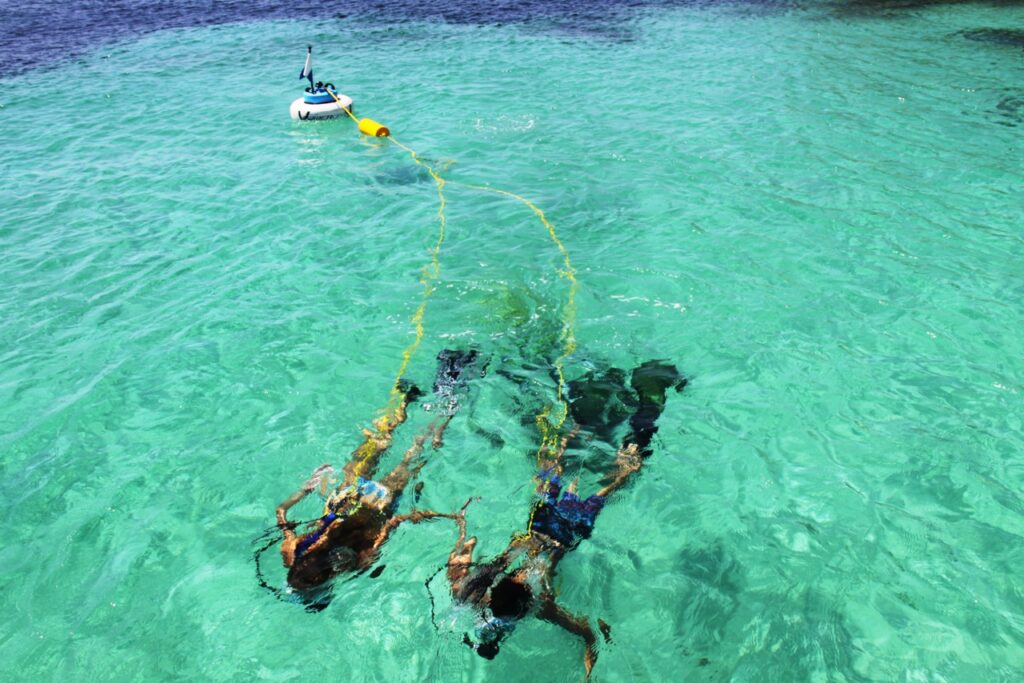
Snorkelling
Pros
- Snorkelling in-water time is only limited by the water temperature and the enthusiasm of the diver.
- Lots of interesting marine life to see in shallow areas.
- Not restricted to being close to a boat, dinghy, or floating hookah.
- Less equipment means less cost, maintenance, storage required and less fresh water used to wash down.
Cons
- Depths are restricted to breath-hold; for most people is probably around 8 to 12 meters.
- Breath-hold dive times reduces to time taking photos and exploring etc.

To summarise
If you don’t mind spending the money, have the storage space onboard, will be visiting lots of scuba diving areas and are happy with the additional maintenance required then having scuba equipment onboard should increase your enjoyment whilst cruising. If you can also fit a HP dive compressor onboard, this will make you fully autonomous.

If you don’t have the space for scuba but still want to spend more time underwater a hookah unit is a viable option.
A scuba tank SSBA is more restrictive because the scuba tank needs to be in a boat or dinghy which makes it harder to tow any distance, but is a great option for hull cleaning if you already have a scuba tank onboard.
If you want to keep it simple and maybe don’t have a lot of spare storage space, snorkelling has a lot to offer. We have enjoyed a great many marine animal encounters and photo opportunities whilst snorkelling.

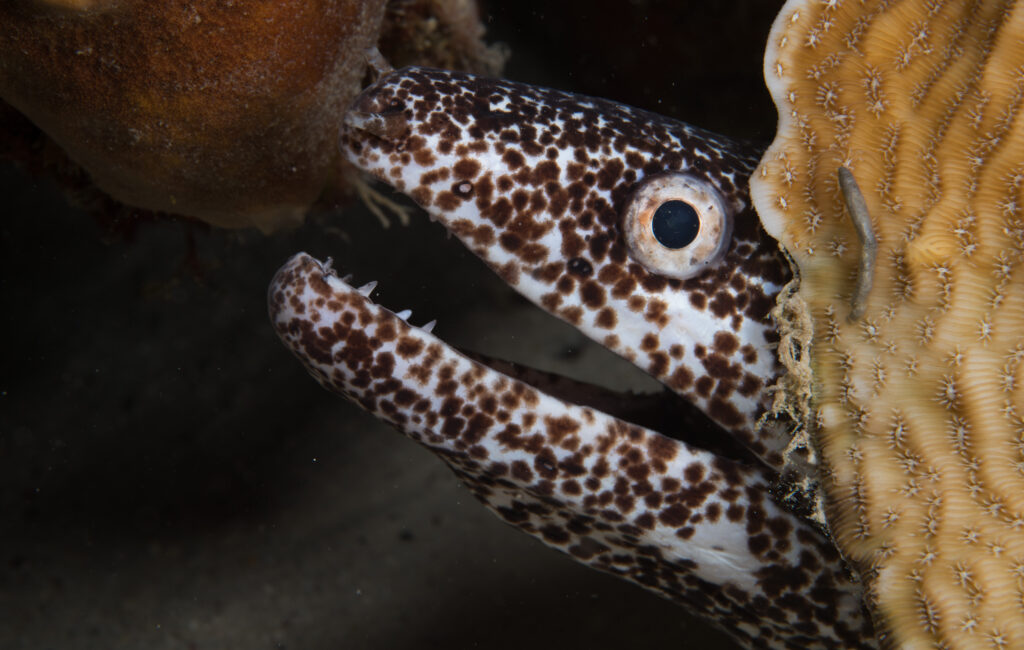

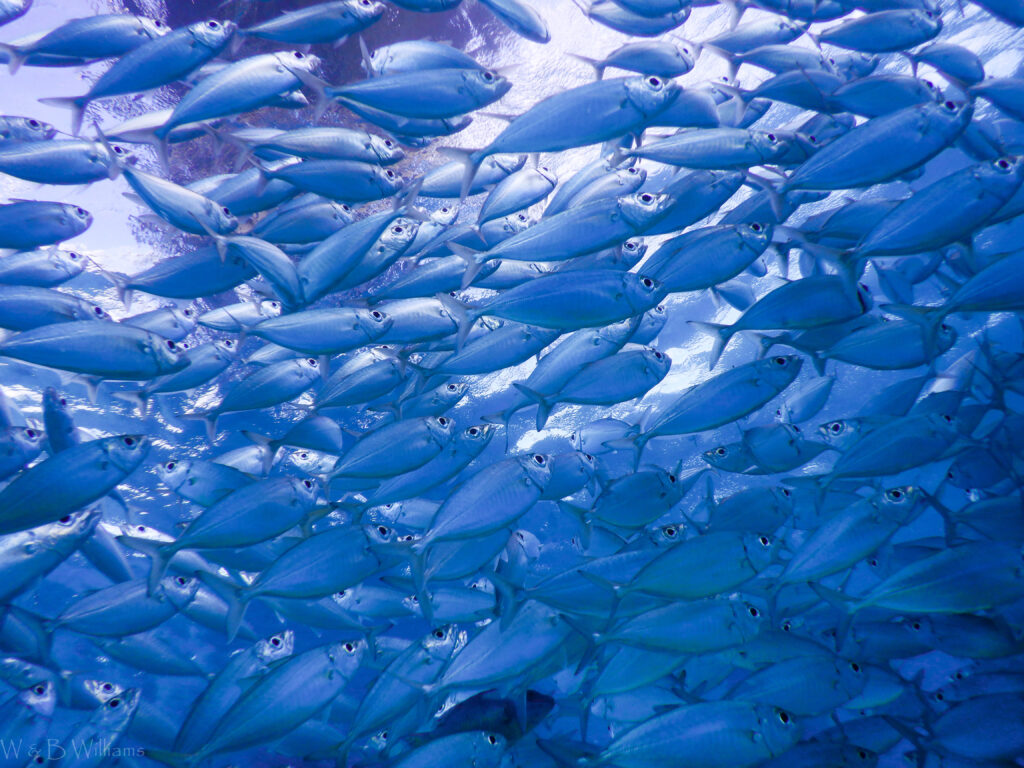

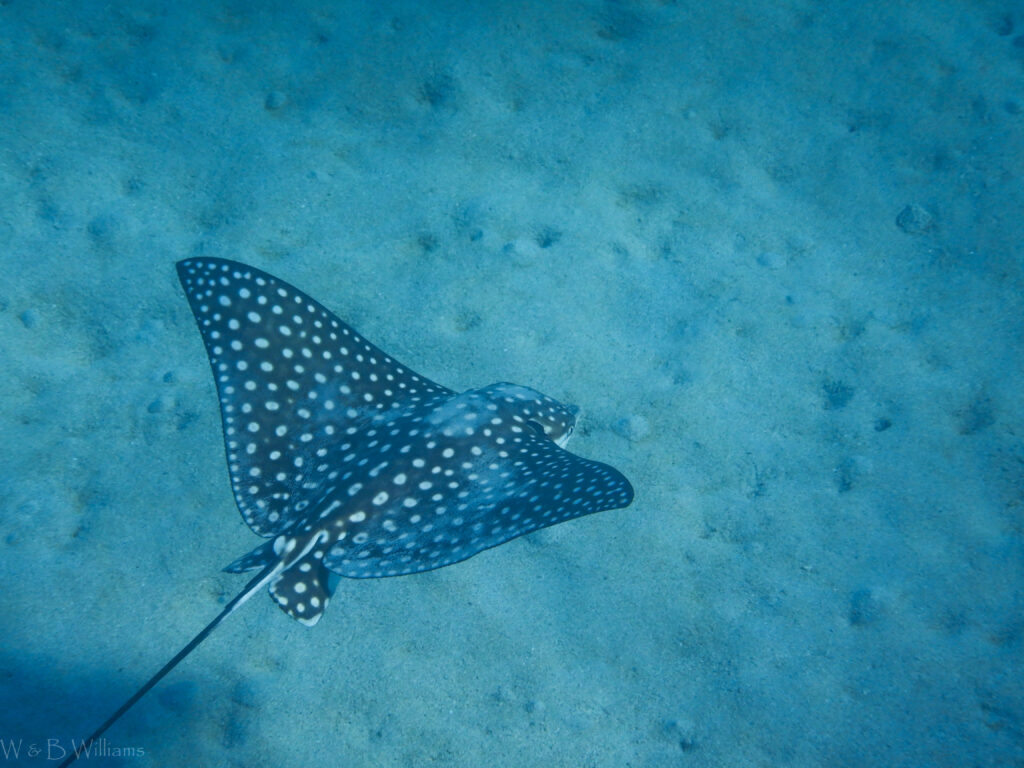

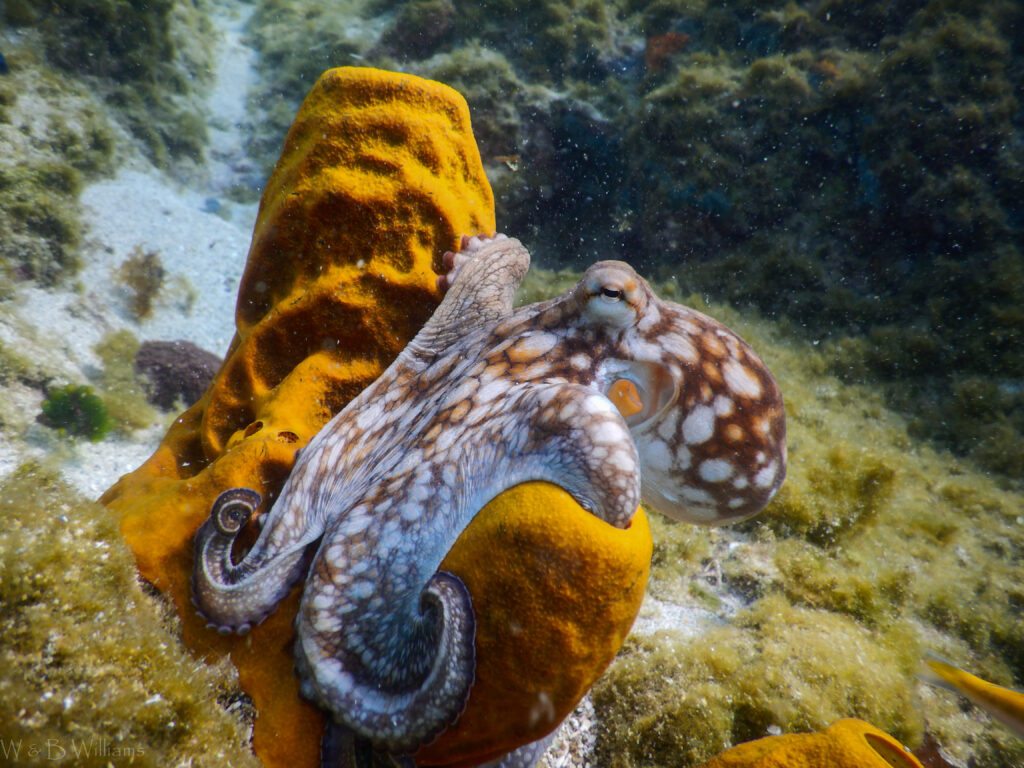

Wayne has lived aboard his Hanses 575 Hope fulltime since 2014 in the Mediterranean and more recently the Caribbean along with his wife, Barbie. He worked professionally for dive operations for 23 years, Skippered a 36 meter superyacht in Australia, and has been involved in the design and specification of dedicated liveaboard dive boats.

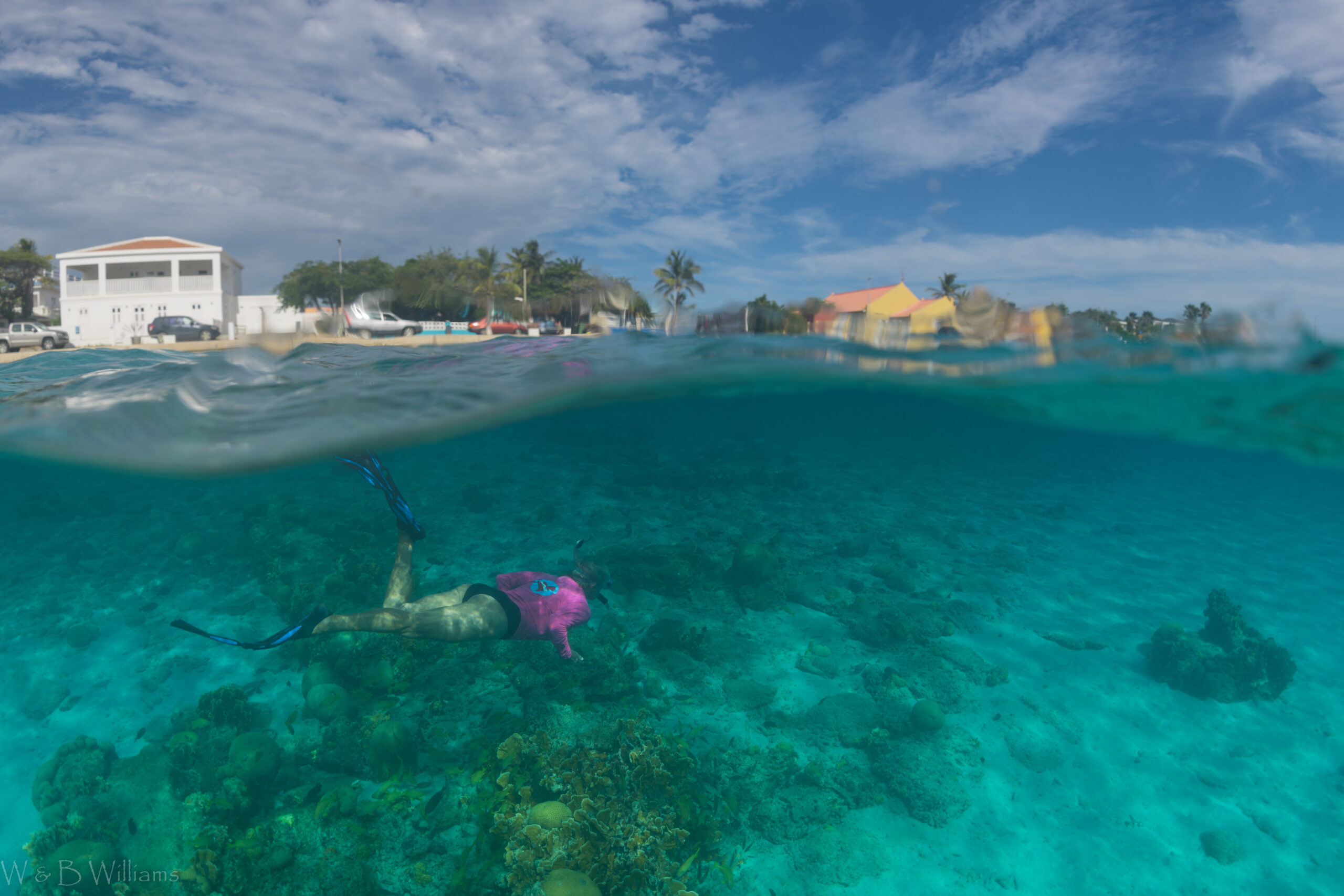
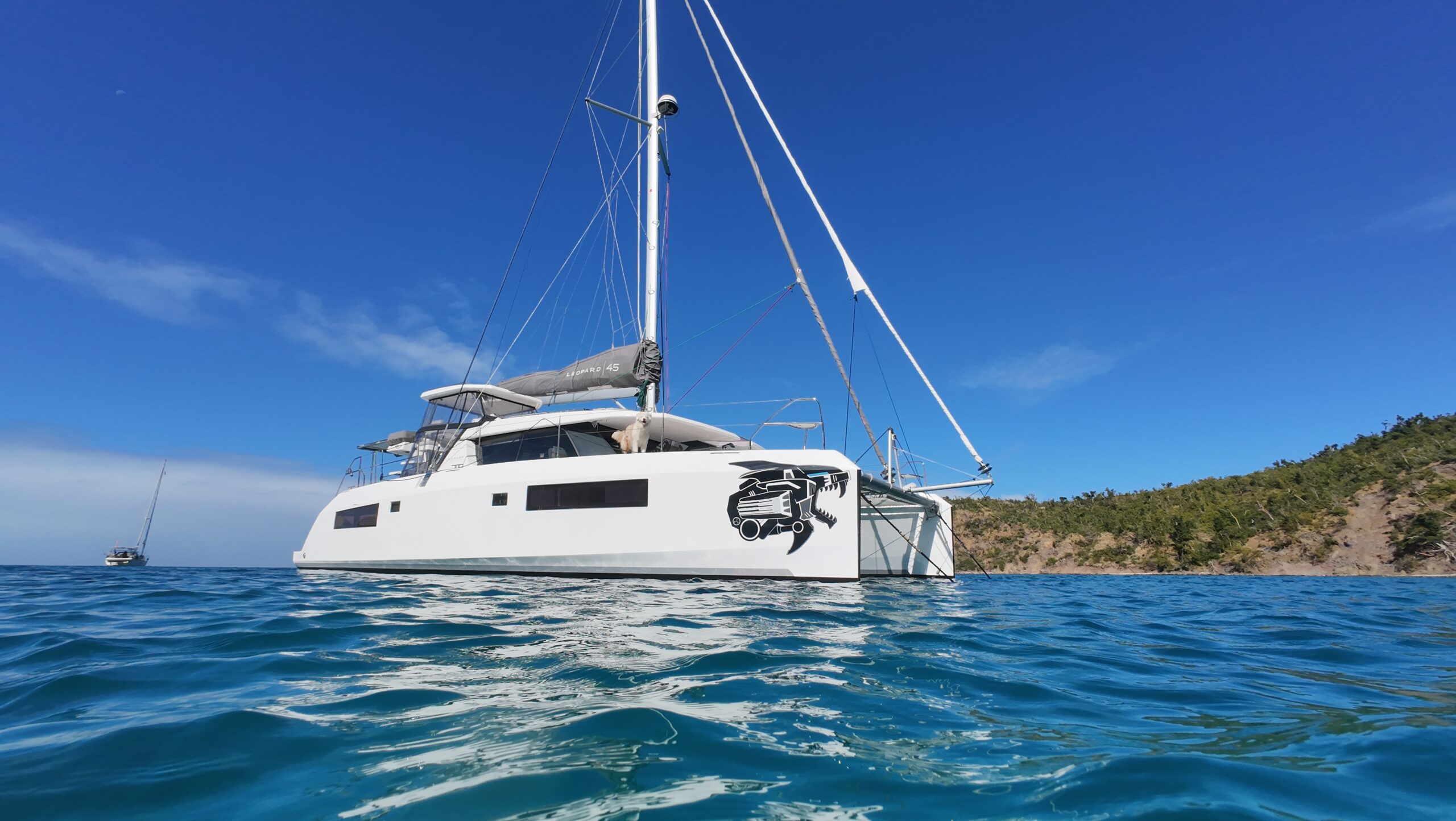
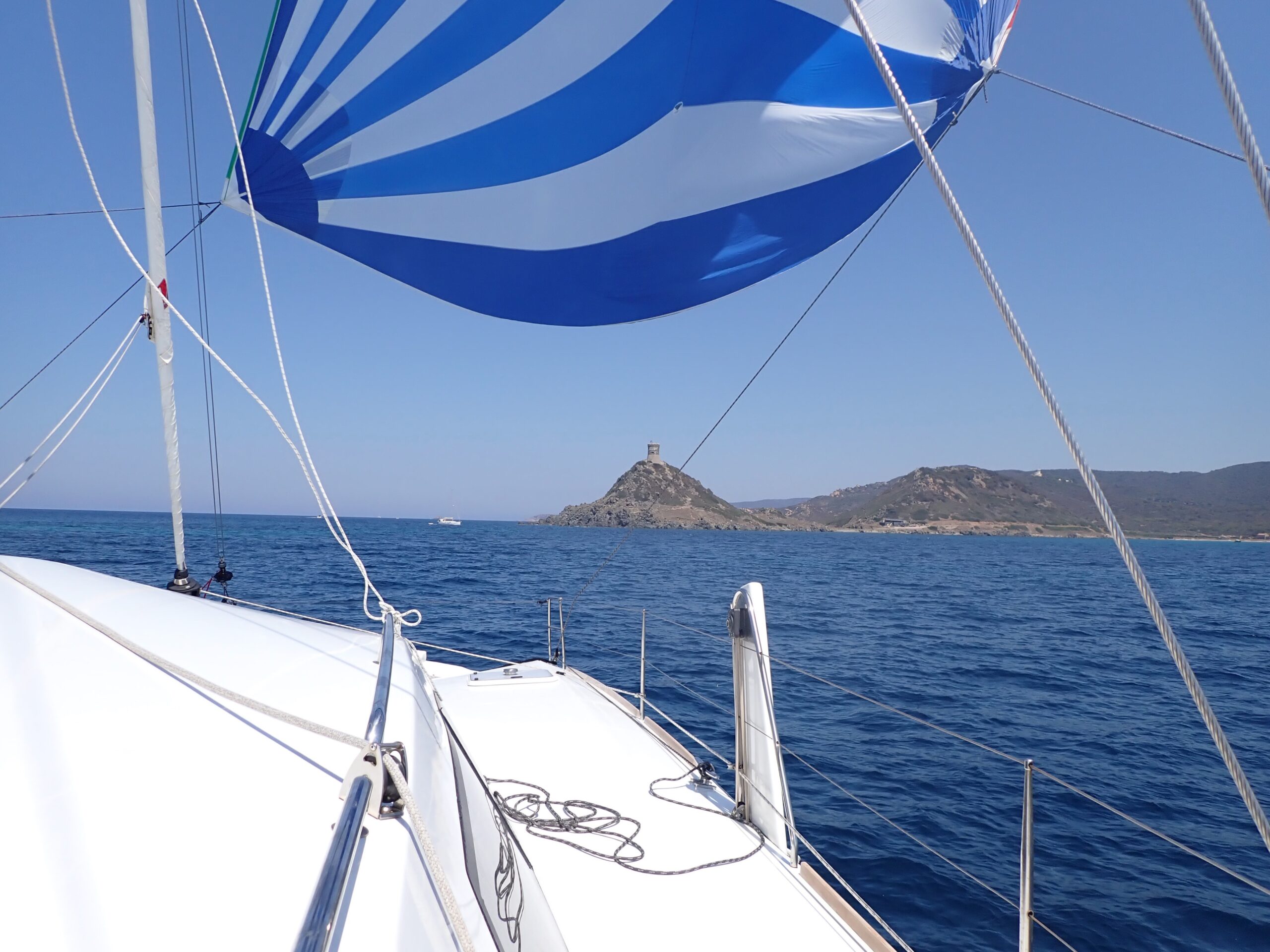
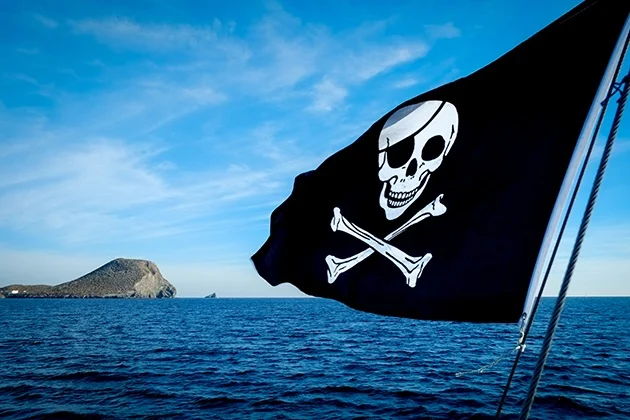
SV Impavidus (YouTube) shows a cheap, safe way of making a 240v hookah system using an oil free compressor that’s well worth looking at. As a diver I have a small compressor and full gear onboard – had helped me get the anchor off abandoned ships anchors many times!
Great article, thanks